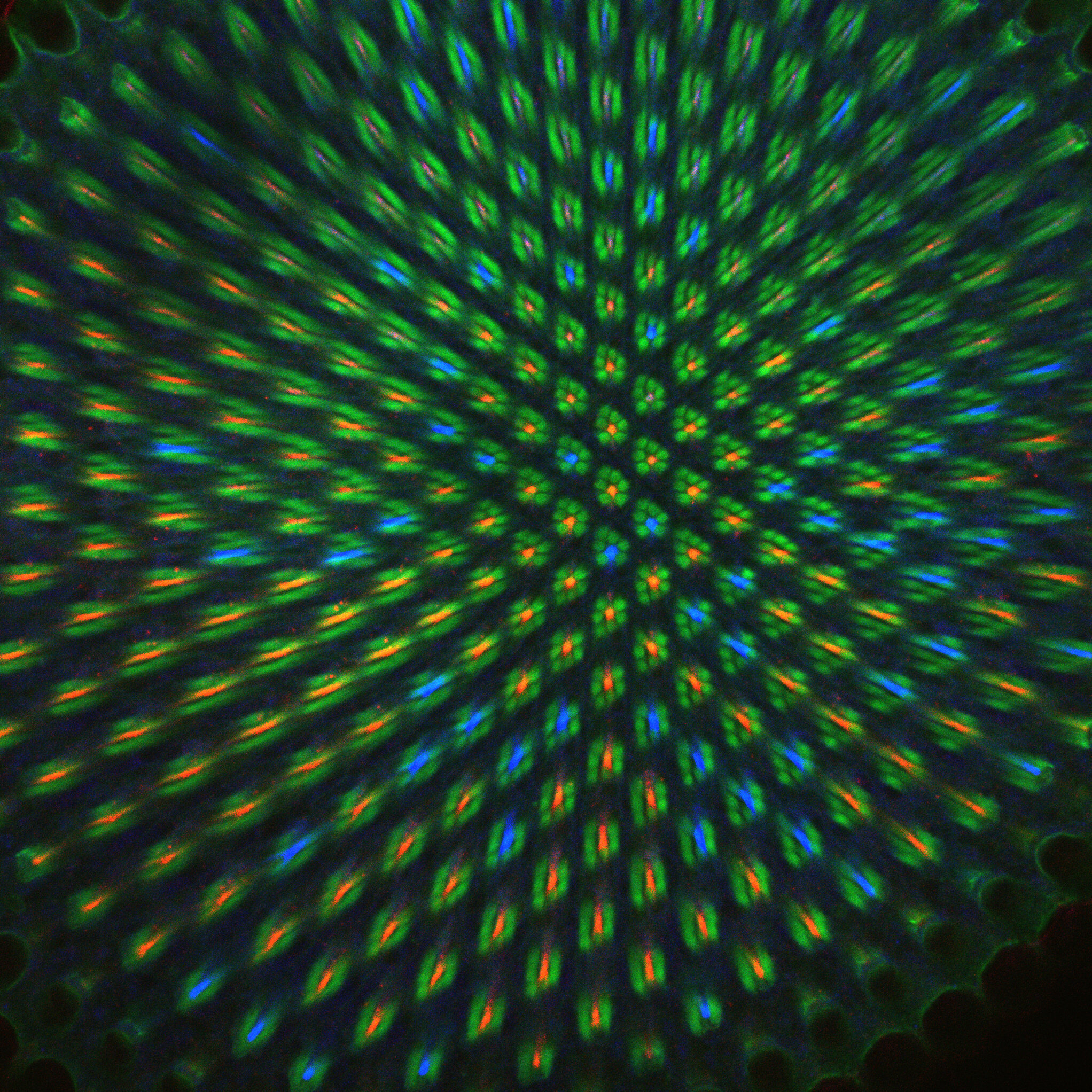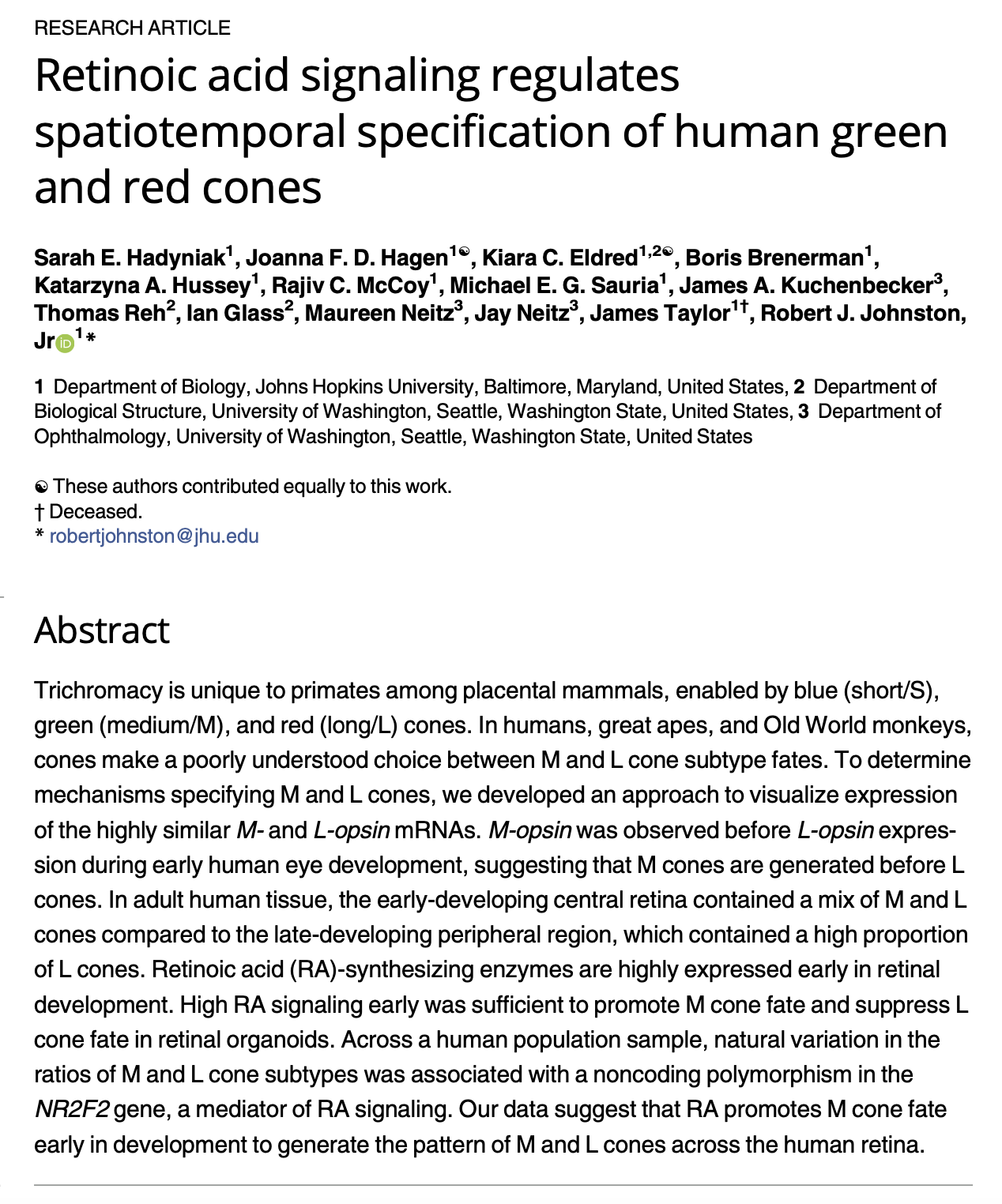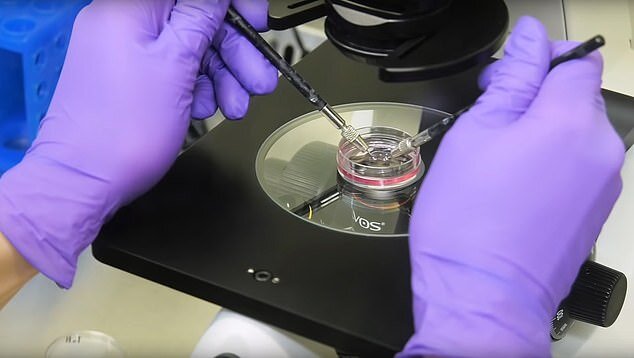
In The News
Coverage of Hadyniak et al. 2024 PLOS Biology paper
United States
EurekAlert!
Neuroscience News
MedicalXpress
The Hub Johns Hopkins University
Voice of America
"Across species, chromosomes are organized in the nucleus," said senior author Bob Johnston, a developmental biologist in the Department of Biology at Johns Hopkins. "Our work adds one piece to the puzzle of understanding how DNA is folded together to make sure that genes work properly."
Johnston's lab had been studying vision in flies. But Robert Johnston and Kiara Eldred saw a chance to try something much more ambitious.
"We discussed this crazy idea of: Could we use these human retinal organoids to study how we get the different color-sensing cells in our eyes?" Johnston says. Using human cells was key because you can't study how humans see color in a fly, or even a mouse.
Biologists at Johns Hopkins University grew the human retinas from scratch to determine how cells that allow people to see in color are made.
Robert J. Johnston, an assistant professor in the university's Krieger School of Arts and Sciences, was selected to the 2014 Pew Scholars Program in the Biomedical Sciences. He is one of 22 biomedical scientists to receive this year's award.
Coverage of Viets et al. 2019 Dev Cell paper
Russia
Video Coverage
Inverse
USA – Highlights
USA – TV/Radio
ABC-7
ABC Fox Montana
Central Coast Public Radio
Central Texas News Now – ABC 25
Delmarva Public Media
Fox 14 News
Interlochen Public Radio
Jazz WCLK
Kansas Public Radio
KFVE The Home Team
KHQ
KNBA
KOSU
KPBS
KPCC: Southern California Public Radio
KRWG TV/FM
KSTC 45 Lifestyle
KTEN
KTEP El Paso
KUNC
KUNM
Lakeshore Public Media
NBC Right Now KNDU 25
North Carolina Public Radio
North East Public Radio
Northeastern Indiana Public Radio
Northern Public Radio
Omaha Public Radio
Oregon Public Broadcasting
The University of New Orleans Public Radio
Virginia Public Radio
WABE
WAND 17
WCBE
WFMJ
WYPR
International Press
Arabic
Bulgaria
Naked Science
Croatia
Dubai
Gulfnews
Hungary
India
MedIndia
New Kerala
Italy
Japan
Mexico
Portugal
Romania
Vice
Spain
Sweden
SVT Nyheter
Turkey
UK







